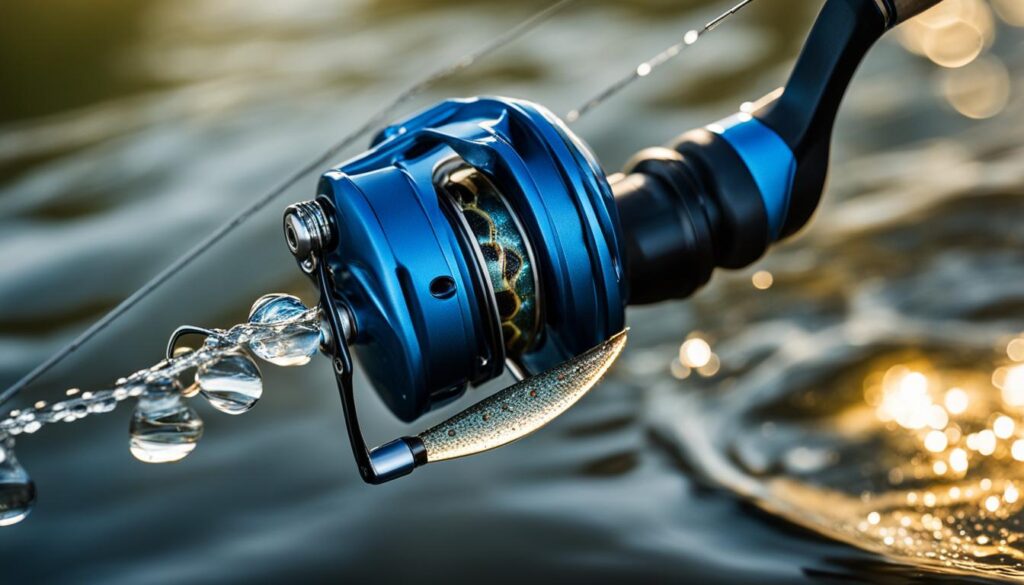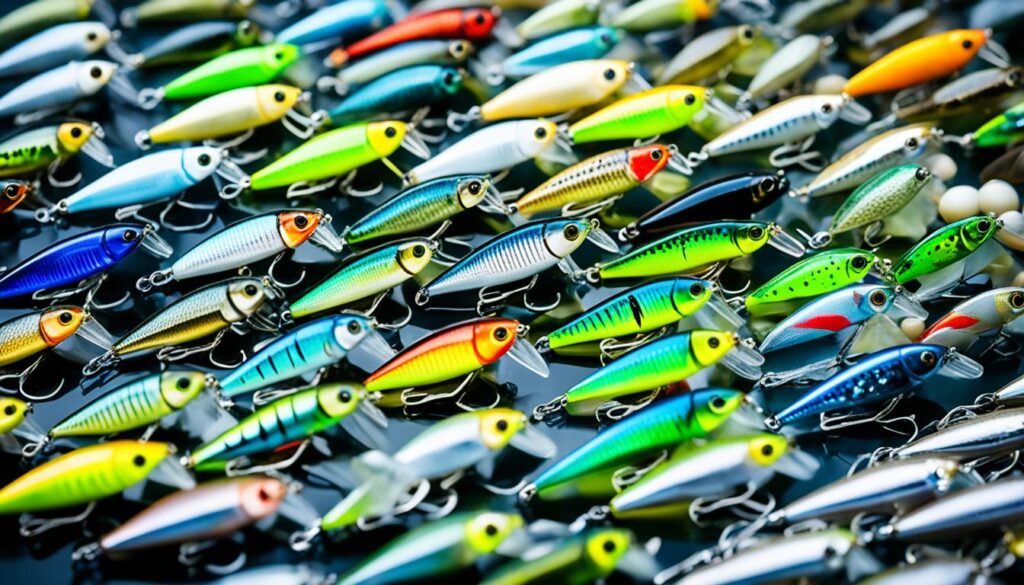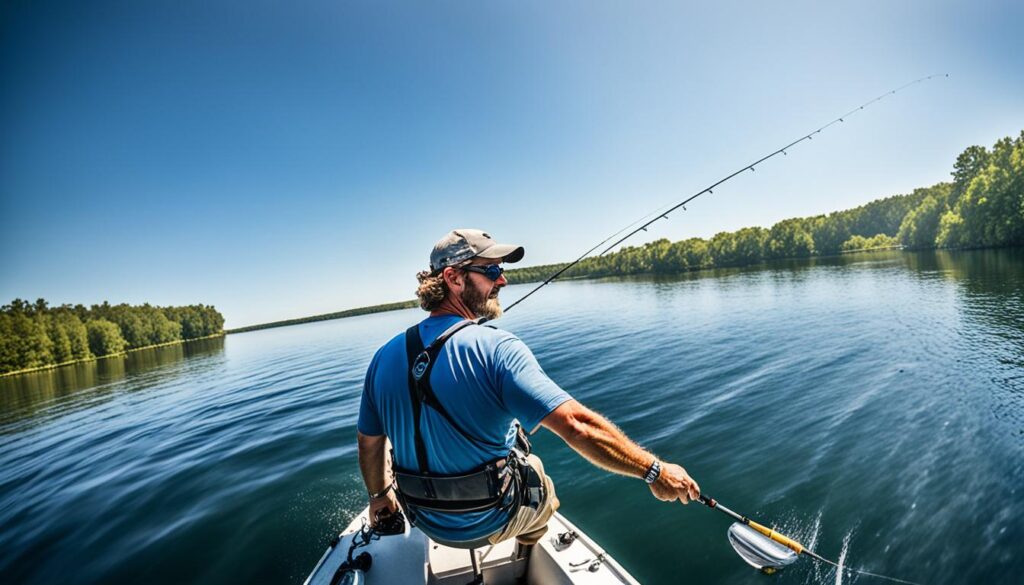Are you ready to take your summer bass fishing to the next level? Mastering deep cranking tips for summer bass fishing can unlock the secrets to catching more trophy-sized lunkers. You can reach bass holding in offshore depths and trigger explosive strikes by utilizing specialized deep-diving crankbaits. In this guide, I’ll share five pro-level deep cranking tips that will have the big bass crushing your crankbaits all summer.
Angler’s Essentials
- You can just position your boat downwind of the fish for a stealthy approach.
- Could you give your retrieve speed and direction to entice bites?
- Choose bright colors that match the predominant forage.
- Could you make accurate lineups to target productive areas?
- You can use a beefier rod setup for fishing around grass.
Tackle for Deep Crankbaits
Having the correct tackle is crucial when deep cranking for summer bass fishing. Here are the essentials:
Deep-Diving Crankbait: Choose a crankbait like the Rapala DT Series designed to reach impressive depths. Match the color to your area’s primary forage.
Fishing Line: A 14-pound fluorocarbon line like Sufix Advance offers excellent sensitivity and low underwater visibility for detecting bites.
Casting Reel: The Daiwa Tatula 200 is an excellent choice with extra line capacity for deep crankbaits.
Fishing Rod: Pair your gear with a medium-heavy power rod like the 7’1″ Lew’s Crankbait Rod for long casts and powerful hook sets.
Polarized Sunglasses: Protect your eyes and enhance visibility with high-quality polarized sunglasses like those from Costa.
With the proper deep-diving crankbait, line, reel, rod, and sunglasses, you’ll be well-equipped for success when deep cranking for big summer bass.
Deep Cranking Techniques for Maximum Success

When it comes to crankbait fishing, varying your retrieve is a game-changer. Experimenting with different speeds and directions can trigger more bites and entice even the most stubborn bass to strike.
Manipulating the rod tip: One effective technique is manipulating the rod tip during retrieval. This can create a darting, erratic motion that mimics injured prey and grabs the attention of nearby bass. Try twitching the rod tip upwards, downwards, or sideways to imitate the movements of a wounded baitfish.
Adjusting retrieve speed: Another way to mix things up is by adjusting your retrieve speed. You can feel the crankbait faster to simulate a fleeing prey or slow it down to give off a more subtle, cautious vibe. You can experiment with different speeds until you find the one that triggers the most strikes from the bass in your area.
Killing the crankbait: One trick that often works wonders is killing the crankbait during the retrieve. This involves abruptly stopping the motion and allowing the lure to rise naturally towards the surface. The pause can be a powerful trigger for trailing bass, enticing them to strike as they see the bait rise tantalizingly.
Understanding Deep Cranking in Different Water Clarity

When it comes to fishing, selecting the right colors for your bait can make all the difference in attracting fish’s attention. Bright and bold color combinations are particularly effective in catching the eye of bass and triggering their aggression. By choosing colors that closely resemble the predominant forage in the area, you can significantly increase your chances of success.
Matching Color Combinations
For bluegill lakes, chartreuse and yellow are popular color combinations that mimic the vibrant hues of these prey fish. The contrast created by these bright colors can entice hungry bass and draw them out from their hiding spots.
On shad fisheries, white and pearl-colored baits are effective in imitating the natural appearance of shad. Shad is a common forage for bass, and using these color combinations can fool bass into thinking your bait is the real thing.
Triggering Aggression
One of the top deep cranking tips for summer bass fishing is using a “loud” lure color with erratic retrieves. Pairing a vibrant color like chartreuse with sudden speed and direction changes can trigger reaction strikes from bass. The contrast of the bright bait combined with its erratic movement profile often proves too tempting for big bass to resist.
Water clarity is a crucial factor in color selection. In clearer conditions, it’s best to opt for more natural shades like blueback herring to mimic baitfish. However, in stained or muddy water, brighter options like chartreuse can significantly increase the lure’s visibility. Remember, the key to deep cranking effectiveness is to constantly adjust your colors based on the conditions, giving you more control over your fishing strategy.
When it comes to deep-diving crankbaits, the Strike King 6XD is a top choice. Its wide ‘hunting’ action is highly effective in covering water, and it can easily reach depths over 19 feet. The realistic patterns on this lure also stand out. However, it’s always worth experimenting with different brands and styles to find the absolute best deep crankbaits for your specific fishing conditions.
By embracing these essential deep cranking tips – using erratic bright baits, matching colors to clarity, and choosing deep divers – you’ll be equipped to target and catch more heavyweight summer bass in those offshore depths.
Recommended Color Combinations
| Water Type | Recommended Color Combinations |
|---|---|
| Bluegill Lakes | Chartreuse and Yellow |
| Shad Fisheries | White and Pearl |
Choosing the Correct Crankbait Depth
Selecting the correct crankbait depth is crucial when cranking for summer bass. Here are some essential tips:
- Go deeper than you think – opt for crankbaits rated to dive more deeply than the water depth you’ll be fishing. This increases the chances of getting down in the strike zone.
- Consider casting distance, too. If fishing offshore depths, you’ll need baits that can reach the deeper areas where bass hold.
- Match your gear to the task. A stiffer, heavier power-cranking rod like the 13 Fishing Envy Black allows you to muscle-deep divers efficiently through the water column.
- When choosing your crankbait’s rated dive range, assess the conditions, target depth, and fish behavior. The correct depth is critical for triggering bites from big summer bass relating tightly to specific depth zones.
By purposefully oversizing your crankbait’s dive curve while factoring in casting range and using proper deep cranking rods, you’ll effectively maximize your ability to present these reaction baits in the strike zone. This gives you an edge for more summertime deep-cranking success.
Recommended Crankbait Depths for Different Fishing Scenarios
| Fishing Scenario | Recommended Crankbait Depth |
|---|---|
| Fishing in shallow waters | 3-6 feet |
| Fishing in medium-depth waters | 6-12 feet |
| Fishing in deep waters | 12+ feet |
Use a Beefier Rod Setup for Grass Fishing
When fishing around grass, it’s essential to have the right equipment for success. A beefier rod setup can provide the necessary power and responsiveness to handle fishing challenges in grassy areas. One recommended option is the Lew’s 7′-1 Med Crankbait Squarebill/Red Eye Shad Casting Rod, which features a moderate taper graphite rod for enhanced rod tip snaps, allowing you to feel every subtle movement and strike.
In addition to a beefier rod, a heavier fluorocarbon line is also essential. Opt for a line weight of around 14 pounds to provide the strength to rip your lure free from grass and effectively fight bass in these harsh conditions. Using a sturdier rod and heavier line, you can confidently tackle the challenges of fishing in grassy areas, increasing your chances of catching that trophy bass.
Tackle Recommendation
When fishing in grassy areas, I recommend the following tackle setup:
- Rod: Lew’s 7′-1 Med Crankbait Casting Rod
- Line: 14-pound fluorocarbon line
- Lure: Deep-diving crankbait
- Reel: High gear ratio casting reel
Conclusion
Deep cranking is an effective technique for summer bass fishing. By utilizing the correct tackle, varying your retrieve, selecting the right colors, making accurate lineups, and mastering the method, you can significantly improve your chances of success when deep water fishing.
Enjoy the process and have fun while reeling in those summer bass. With the correct deep crankbait, like the Rapala DT-16, and following these summer fishing tips, you’ll be well on your way to landing that trophy-worthy bass. So gear up, hit the water, and prepare for an exciting and fruitful fishing adventure!
Whether a novice or an experienced angler, these tips can help you make the most of your deep crankbait fishing. So go ahead and put your skills to the test.
FAQ
What are some deep cranking tips for catching more summer bass?
Position your boat downwind of the fish, vary your retrieve, choose bright colors, make accurate lineups, and use a beefier rod setup around grass for success.
What tackle is recommended for deep cranking?
Use a deep-diving crankbait, such as the Rapala DT-16, with the appropriate color for the forage. Pair it with 14-pound Sufix Advance Fluorocarbon line and a 7.3:1 13 Fishing Inception Sport Z Casting Reel. Use a 7’4″ MH/Mod Fast 13 Fishing Envy Black 2 Cast Rod and polarized sunglasses for visibility.
How should I set up my boat for deep cranking?
Use the Minn Kota Ultrex Trolling Motor for accurate boat positioning. Employ a Humminbird SOLIX 12 CHIRP MEGA SI+ G3 fish finder to locate fish and Humminbird MEGA 360 Imaging for a comprehensive view of the underwater environment.
What’s the best way to position my boat for deep cranking?
Position your boat downwind of the fish to reduce spooking. Utilize tools like GPS trolling motor anchoring and imaging technologies to make accurate and receptive casts to productive areas like grass and rock transitions.
How can I vary my retrieve for deep cranking?
Experiment with speed and direction changes by manipulating the rod tip and retrieve speed. Killing the crankbait and letting it rise on the pause can be an effective trigger for trailing bass.
What colors should I choose for deep cranking?
Choose bright and bold color combinations that match the predominant forage. For example, use chartreuse and yellow on bluegill lakes or white and pearl on shad fisheries. Pair a “loud” color with speed and direction shifts to trigger aggressive bass.
How can I make accurate lineups for deep cranking?
Know where you’re casting the bait relative to the fish, structure, and cover. Make long casts parallel to grass lines along the harder outer edge where bass and baitfish stack up. Use shoreline reference points or imaging sonar technologies to repeat productive casts.
What rod setup should I use for deep cranking around grass?
Use a moderate taper graphite rod, like the 13 Fishing Envy Black 2 Cast Rod, for more responsive rod tip snaps. Pair it with a heavier fluorocarbon line, around 14 pounds, to provide the necessary power for ripping the lure free and fighting bass around grass.
How does water clarity affect my choice of deep-diving crankbait color?
In clear water, choose blue back, bone sides, and chartreuse belly or Tennessee shad colors. In dirtier water, opt for blue and chartreuse or purple and chartreuse.
What are the key techniques for successful deep cranking?
Deep cranking is a power fishing technique that requires reeling the bait. Maintain a low rod tip during retrieval to maximize dive rate. Experiment with retrieve speed and stopping the bait to let it float off the bottom, which can trigger strikes. Keep the technique simple and enjoy the process.
How should I choose the right crankbait depth for deep cranking?
It’s generally a good idea to go bigger than you need when it comes to crankbait depth. Most crankbaits have a depth range, so select a bait that dives deeper than the actual fishing depth. Consider casting distance and rod capabilities as well.
What are the key takeaways for deep cranking tips?
Deep cranking is an effective technique for finding and catching summer bass. By following the tips for tackle selection, boat setup, positioning, retrieve variation, color selection, lineups, and technique execution, anglers can increase their success in deep water fishing. Remember to have fun while reeling in those summer bass.
